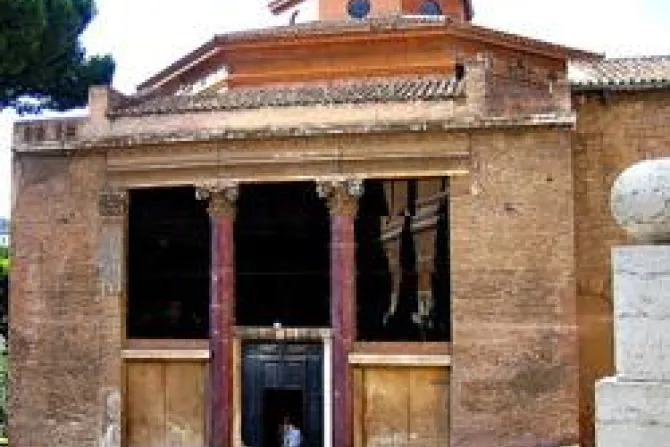Rome, Italy, Oct 3, 2011 / 05:46 am
A remarkable Vatican-Swedish project is providing a new 3-D insight into Christian Rome’s architectural history.
“It’s what we call building archaeology,” Olof Brandt of the Pontifical Institute for Christian Archaeology explained to CNA. He is currently working on a 3-D study of Rome’s Lateran Baptistery, situated next to the Cathedral of St. John Lateran.
“That’s the archeology of existing structures, which is about reading the traces of the past in the existing walls of a building.”
Brandt points out the tell-tale signs as to how and when the baptistery evolved – from the 4th century foundations to the later 16th-century windows.
“So, there, with just a brief look at this building, you immediately understand that this building has had a history. It has been reconstructed and rebuilt in different designs and different periods and that's what we are here to study.”
The study is using the latest techniques in 3-D mapping. The process, known as structure-from-motion, involves taking thousands of digital photographs of the baptistery and then using them to build up a virtual recreation in three dimensions.
“We can make a very high resolution texture out of the building that the archaeologists can use for really close up interpretation and analysis of the building,” says Håkan Thorén of the Swedish Heritage Board.
“I think it is possible that we have so far taken about 4,500 pictures of the building. And we still have some to take. So I think we'll end up with about 6,000 images that we use to compute a 3-D model out of the building.”
The team sees the baptistery project as particularly significant, describing the building as “one of the most important Christian buildings in the world.” Founded by Pope Sixtus III in 440, it is built upon an earlier structure dating from the time of the Emperor Constantine in the previous century. In fact, it’s sometimes claimed he was baptized in its octagonal font. For many generations afterward it was the only baptismal font in Rome.
“It was built together with the Lateran cathedral, which is also still standing, but the ancient building is invisible because it is covered by Baroque decoration, while, as you can see, the Lateran baptistery is not,” says Olof Brandt.
“So, what you can see is actually the original walls. The brick walls you see are 1,700 years old and they can tell us quite a bit about the history and the evolution of this building, and in a rather unique way.”
And as is the way with Christian Rome, while archeologists do their job, the priests continue to do theirs.
“From the 4th century up to today, the baptistery has contained the signs of a history that has always been a living one,” says Fr. Fabio Borghesi of the Lateran Baptistery.
“It has never stopped being used for its original purpose and still today it is the font for the Parish of St. John Lateran and every week we welcome children and families for baptisms.”
Corrected Oct. 3, 2011 at 3:20 MDT. Changes name of Fr. Borghesi.



